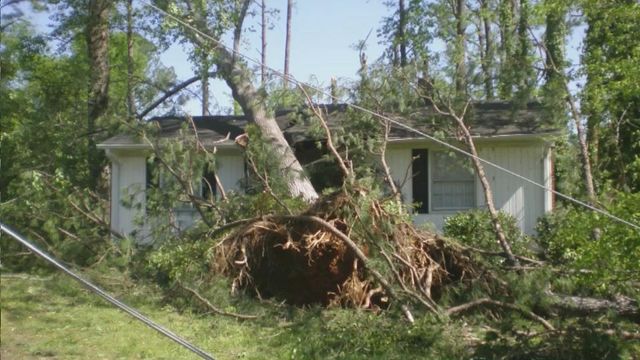NC officials, FEMA work to improve storm response
On April 17, 2011, as storm clouds cleared and bright sunshine returned to central and eastern North Carolina, thousands of residents and emergency officials fanned out across the region to assess damage and figure out what was next.
Posted — UpdatedThe response from local, state and federal officials was massive, but for some, the sunshine after the storms revealed nothing but confusion and frustration.
Five years later, the response to the state's second deadliest tornado outbreak is still being analyzed, both by officials looking to improve the process and family members still working on rebuilding.
Judging response is a relative science. Local and state responders generally received high marks following the April 2011 storms, but it gets more complicated when it comes to the Federal Emergency Management Agency.
Some storm victims said FEMA's response wasn't adequate, while others called the agency's efforts great.
Mike Sprayberry, North Carolina's Emergency Management director, headed up operations in 2011. He said officials learned plenty that can help them be ready when another natural disaster strikes.
"I think we did a good job," he said of the 2011 efforts.
Sprayberry, who serves on FEMA's advisory board, still echoes what FEMA Director Mike Bolch said five years ago.
"A lot of people like to have themselves made whole, but it's really up to an individual, their insurance, their family, their savings," Bolch said then.
Ultimately, Sprayberry says proper storm preparation comes from constant planning, better management of the public's expectations and a stronger emphasis on personal responsibility.
"That's the message: be prepared, be insured," Sprayberry said.
A 2011 post-storm evaluation report obtained by WRAL News shows communication shortfalls sometimes compromised efforts to respond. Whether it was coordinating with nonprofit groups or leading people through mountains of FEMA regulations and paperwork, Sprayberry admits that government needs to try to limit confusion.
"It doesn't make sense to a lot of people, and we get that. I'll tell you that's one of the things that FEMA is currently reviewing to try to make it a better process," Sprayberry said.
Another change following 2011 was the use of social media. Sprayberry says it's become critical as state officials gather information and inform the public during emergencies. The state launched the ReadyNC app to help with that effort and constantly reviews social media platforms during storms. Sprayberry said it puts "speed to the need."
"You see an issue and pull the trigger and put something out and execute," he said.
State and local responders also continue to train for the next emergency. Sprayberry says federal funding recently ran out for programs that once helped states formulate post-storm action reports. Emergency Management officials are working on ways to fill that funding gap.
• Credits
Copyright 2024 by Capitol Broadcasting Company. All rights reserved. This material may not be published, broadcast, rewritten or redistributed.






